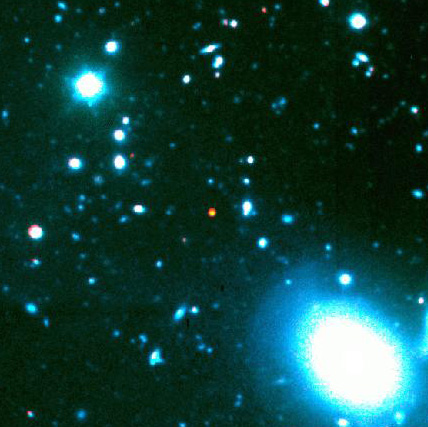News
Infant galaxies: small and hyperactive
 When galaxies are born, do their stars form everywhere at once, or only within a small core region? Recent measurements provide the first concrete evidence that star-forming regions in infant galaxies are indeed small - but also hyperactive, producing stars at astonishingly high rates.
When galaxies are born, do their stars form everywhere at once, or only within a small core region? Recent measurements provide the first concrete evidence that star-forming regions in infant galaxies are indeed small - but also hyperactive, producing stars at astonishingly high rates.
This is the conclusion drawn from recent observations of one of the most distant known galaxies: a so-called quasar with the designation J1148+5251. Light from this galaxy takes 12.8 billion years to reach Earth; in turn, astronomical observations show the galaxy as it appeared 12.8 billion years ago, providing a glimpse of the very early stages of galactic evolution, less than a billion years after the Big Bang.
The observers, an international team of researchers, made use of the IRAM Interferometer to obtain images of a very special kind: They recorded the infrared radiation emitted by J1148+5251 at a specific frequency associated with ionized carbon atoms, which is a reliable indicator of ongoing star formation. The resulting images show sufficient detail to allow, for the first time, the measurement of the size of a very early star-forming region. With this information, the researchers were able to conclude that, at the time, stars were forming in the core region of J1148+5251 at record rates - any faster, and star formation would have been in conflict with the laws of physics.
The results will be published in the February 5 issue (Volume 457, No. 7230) of the journal Nature.
For more details see the full press releases on English, French and German.



